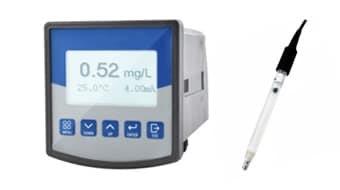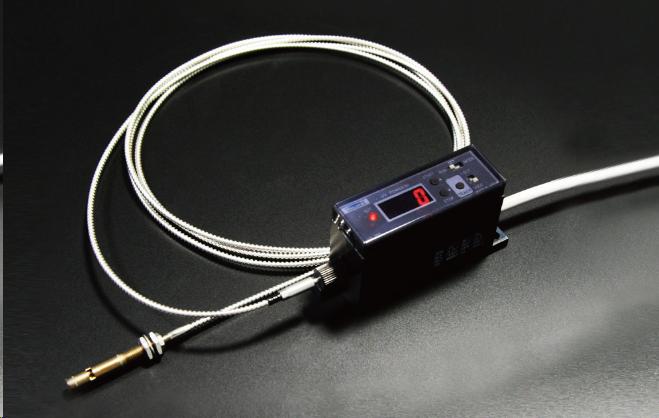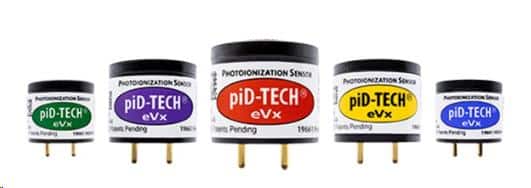Ozone sensors play a crucial role in modern society, particularly in the fields of environmental protection, health safety, and industrial control. They not only help us better understand and address air pollution issues but also play a key role in protecting public health and enhancing industrial efficiency.
What is an ozone sensor?
An ozone sensor is a device used to detect and measure the concentration of ozone gas (O₃) in the environment. These sensors are widely used in various fields, including environmental monitoring, industrial process control, indoor air quality detection, and health and safety protection. By monitoring ozone levels in real-time, ozone sensors provide critical data that help people take appropriate measures to protect the environment and health.

Types of ozone sensors and their working principles
Electrochemical sensors

Electrochemical sensors detect ozone through chemical reactions. When ozone gas enters the sensor and reacts with the electrolyte on the electrode, it generates a current. The strength of this current is proportional to the ozone concentration. The sensor converts this current into an electrical signal, reflecting the ozone concentration.
UV absorption sensors
UV absorption sensors measure ozone concentration by detecting the absorption of ultraviolet light by ozone molecules. When ultraviolet light passes through a gas sample containing ozone, the ozone molecules absorb part of the UV light. The sensor measures the decrease in UV light to calculate the ozone concentration.

Metal oxide semiconductor sensors
Metal oxide semiconductor sensors detect ozone through a chemical reaction between ozone and the surface of a metal oxide (such as titanium dioxide). When ozone gas contacts the metal oxide surface, it causes a change in the material’s resistance. The sensor determines the ozone concentration by measuring this resistance change.
Photoionization detectors (PIDs)

Photoionization detectors use ultraviolet light to ionize ozone molecules, producing ions and electrons. The sensor measures the current generated by these ions and electrons to determine the ozone concentration. The size of the current is proportional to the ozone concentration.
Ozone sensor applications
Air quality monitoring: Used to monitor ozone concentrations in urban and industrial areas, helping to reduce air pollution and protect public health and the environment. Provides ozone data to help scientists study ozone behavior in the atmosphere and climate change mechanisms.
Health safety: Monitors ozone concentrations in enclosed spaces such as office buildings, hospitals, and schools to ensure air quality is within safe limits. In industrial environments where ozone is used, monitors ozone levels to protect worker health and safety.
Industrial control
Industrial process monitoring: Monitors and controls the use of ozone in industrial processes such as disinfection, oxidation, and bleaching to ensure safety and effectiveness.
Vehicle emission monitoring
Emission control: Detects and analyzes ozone levels in vehicle exhaust, helping to reduce the impact of vehicle emissions on air quality
How to choose an ozone sensor?
- Application scenarios: Sensors with high sensitivity and accuracy are needed to monitor air quality in real-time. Durable sensors that can operate in harsh environments are required to ensure reliability and longevity.
- Sensitivity and accuracy: Choose sensors with appropriate sensitivity according to application needs. Select sensors with high accuracy to ensure the precision of measurement data.
- Response time: For applications requiring immediate monitoring and control, such as industrial process control, choose sensors with short response times.
- Durability and maintenance: In industrial environments, choose sensors that are durable and can withstand harsh conditions.
- Compatibility: Ensure that the sensors are compatible with existing monitoring systems and data recording devices.
- Measurement range: Choose sensors with a measurement range that meets actual needs. Environmental monitoring may require sensors with a wide measurement range.
Ozone sensor and ozone generator
- Air purification system: The sensor monitors ozone concentration and the ozone generator automatically adjusts ozone generation according to the data to keep indoor air quality within safe limits. When the ozone concentration is too high, the sensor triggers an alarm or shuts down the generator to prevent health hazards.
- Water treatment system: The sensor monitors the ozone concentration in the water, and the generator adjusts the ozone amount according to the data to ensure the disinfection effect and safety. Precise control of ozone concentration reduces waste and improves system operating efficiency.
- Industrial applications: The sensor monitors ozone concentration in real time, and the generator automatically adjusts ozone output to optimize industrial processes.

Challenges for ozone sensors
- Sensitivity and selectivity: High sensitivity can lead to false responses to other gases and be interfered by other gases (such as nitrogen dioxide and sulfur dioxide), affecting the accuracy of measurements.
- Data management: Handling and analyzing the large amounts of data generated by ozone detection systems can be challenging. The output signals may contain noise that needs to be filtered and corrected through data processing techniques.
- Calibration and maintenance: Ensuring accurate and reliable measurements requires regular calibration and maintenance of the sensors.
- Environmental conditions: Changes in environmental temperature and humidity can affect the performance of ozone sensors, leading to measurement errors.
- Cost: High-precision and high-sensitivity ozone sensors are usually expensive. Frequent calibration and replacement of sensor components add to the overall costs.
Summary
In conclusion, ozone sensors provide us with an effective tool, enabling us to understand and manage the ozone concentration in our surroundings in real-time. As technology continues to advance, the accuracy and convenience of ozone sensors are also improving, safeguarding our health.
At the forefront of this technological advancement, Apure’s cutting-edge sensors and monitoring solutions ensure the highest water quality. You can also rely on Apure for optimal water quality management, safeguarding the safety and purity of our most vital resource. In addition to ozone generators, Apure specializes in a variety of water quality meters, flow meters, level measurements, pressure measurements, and temperature measurements. Visit our website to consult with us!
